ASUS P9X79-E WS Review: Xeon meets PLX for 7x
by Ian Cutress on January 10, 2014 10:00 AM EST- Posted in
- Motherboards
- Asus
- Workstation
- X79
- Prosumer
ASUS P9X79-E WS BIOS
The BIOS for workstation motherboards, at least from the ones we have tested, are not different from the main channel line of motherboards. This is mainly due to the motherboard unit at ASUS that produces the workstation is also the same unit that deals with the consumer lines. As a result, we get a near identical BIOS to the recent Z87 line of motherboards (updated with Last Modified, My Favorites, Quick Note etc), with one or two options aimed specifically at the WS. As one might imagine, there is fewer automatic overclock options provided due to the nature of the market being aimed at (as well as the fact that Xeons are multiplier and CPU strap locked), but our analysis is essentially the same as our other reviews on this BIOS generation.
Since the inception of graphical interfaces for consumer motherboard BIOSes, motherboard manufacturers have been keen to give the user as much functionality as they need without going overboard with garish visuals, as well as catering for users who are new to the BIOS. The Z77 platform BIOS from ASUS was well received, giving users a large number of options for configuration in a textual format – the implementation that debuted with Z87 and is on the P9X79-E WS is another iteration along similar lines with a few new interesting points.
Firstly when we enter the BIOS, we get our ‘EZ Mode’ (‘easy’, rather than ee-zed) similar to the last generation but with a few minor updates. Firstly the font is changed to a pixelated form of common fixed-length word processing fonts:
On this front screen we get detail on the motherboard in use, the BIOS version, the CPU installed, the speed of the CPU, the total memory installed, the CPU information (temperature/voltage), the DIMM slot recognition and fan speeds. An addition to this screen is that we can apply XMP without going into Advanced mode with a small drop down in the DRAM Information section. The fans too can be adjusted with their own drop downs:
For users that want to access Advanced Mode but a specific menu, the Shortcut (F3) option at the bottom defaults to the following:
When entering the BIOS Advanced Mode, we get put into the Main tab to begin with:
Several options are new to the BIOS that are worth pointing out. On the right hand side we have two new options – Quick Note and Last Modified. By choosing Quick Note, a user can leave notes in a notepad type window for future reference. Last Modified does what it says on the tin – it tells the user what options have been changed in the BIOS since the system was booted.
Another feature shown on the Main screen is on the right hand side and in yellow, labeled ‘F4: Add to Shortcut and My Favorites’. This is pointing to the tab on the top left of the BIOS, called ‘My Favorites’.
My Favorites allows users to select any option in the BIOS they want and place it in this menu. This is of invaluable help to overclockers who use the BIOS frequently – it allows these users to place the options they used most frequently (CPU Ratio, CPU Voltage, Memory sub-timings) into a single menu rather than shuffle around several menus at once. It solves the issue of ‘what is the right way to show your options’, as almost all the different motherboard manufacturers have their own way. Also in terms of customization, users can place their own overall tabbed menu options into the shortcut menu.
The main series of options are all found in AI Tweaker, the home for overclocking options.
One of the many positives about the ASUS BIOS is the information provided with options in the top right corner. For most of the options it provides an explanation of what the option does - if it comes with Auto/Manual selections these are described as well. As for AI Tweaker itself, our options are split into CPU+DRAM, voltages and more voltages. Advanced options for DRAM subtimings and power control are in sub menus off this main list:
Unfortunately we do not get the GPU options similar to Z77 ROG boards which show which GPUs are in the motherboard at POST. This is a little unfortunate to be overlooked for a WS motherboard.
In the Advanced menu are the controller options and additional CPU/power state adjustment options.
In the Onboard Devices options above show the available controller options, and for Xeon Phi users the option in System Agent has to be enabled:
BIOS fan controls are found under the Monitor tab menu:
Ideally users will head to the OS for more extensive fan controls, but ASUS offers the basics here – an RPM lower-bound limit with silent/standard/turbo fan profiles.
Elsewhere in the BIOS we have boot options for fast booting, boot order, boot override, and also utilities such as EZ Flash and ASUS’ OC Profiling.
ASUS P9X79-E WS Software
One of the old habits of X79 launch for ASUS is AI Suite II. While on Z87 and the Rampage IV Black Edition (a new build) the system is designed to use AI Suite III, for the P9X79-E WS we get AI Suite II, which still has much of the functionality except the slicker interface and DIP4 overclocking options. Instead we go back to a TPU/EPU arrangement in the options.
AI Suite
AI Suite starts as a simple bar with buttons for the software tools, monitoring and updates, as well as a tuning button to allow the software to perform overclocking. As part of our reviews of the P8Z77-V Pro and the P8Z77-V Deluxe, we have covered most of this software, including:
TurboV Evo: Overclocking tools.
DIGI+ Power Control: Adjusting power delivery to the system.
EPU: Energy saving functionality.
Fax Xpert: Fan control and management.
Probe II: Monitoring temperatures, voltages and fan speeds.
Sensor Recorder: Time comparison charts for Probe II.
AI Charger+: Fast USB 3.0 charging for BC 1.1 compliant devices.
USB 3.0 Boost: Increased USB 3.0 speed.
ASUS SSD Caching II: SSD Caching using ASUS technology and Marvell controllers.
Here are the key features:
TurboV Evo
The overclocking heart of AI Suite is TurboV Evo, which allows users to adjust the voltages and BCLK of the system in real time. I typically use this software to find basic OS limits, and then attempt to boot into OS at that speed to give a little headroom.
Part of TurboV Evo is the Auto Tuning section, which gives users two choices for automatic overclocks - Fast and Extreme. Both of these are covered in the Overclocking part of this review.
DIGI+ Power Control
One of the features that ASUS likes to advertise as part of their motherboard range is the ability for the user to adjust how the power delivery responds to load. These options help maintain constant voltage under busy periods (useful for stability testing and overclocks), or can be used to reduce the power usage of the motherboard and increase life expectancy. Along with the BIOS controls, ASUS also offers software tools in AI Suite to perform these operations.
Fan XPert
In order to separate itself from the rest of the motherboard manufacturers, ASUS does like to parade their fan technology. By using upgraded fan controllers on board, a combination of hardware and clever software allows ASUS to control their fans like no other. From the software perspective, we have Fan Xpert.
Fan Xpert will auto tune the fans, giving each one a power vs. RPM curve (as fans do not linearly increase in speed with applied power). The user can then adjust a multi-point power against temperature curve for each of the fans in the system. In my case, I like to have my fans run as quiet as possible when idle and during videos, and as fast as they can during gaming.
SSD Caching
For users that want to use a small SSD as a cache to a larger hard drive, ASUS use Marvell controllers on the P9X79-E WS to allow the system to use SSD Caching. This was all the rage when prices for SSDs were $2+ per GB, but now we are down to less than a quarter that in some cases, which suggests that SSD Caching might have had its time. It is still part of the X79 system however.
Marvell Storage Utility
While not from ASUS, the motherboard does come with the software in order to manage the Marvell SATA ports in terms of arrays. The controller is capable of RAID 0, 1 and 10 (unfortunately not RAID 5), and the web-based interface is similar to other Marvell systems we have reviewed before.


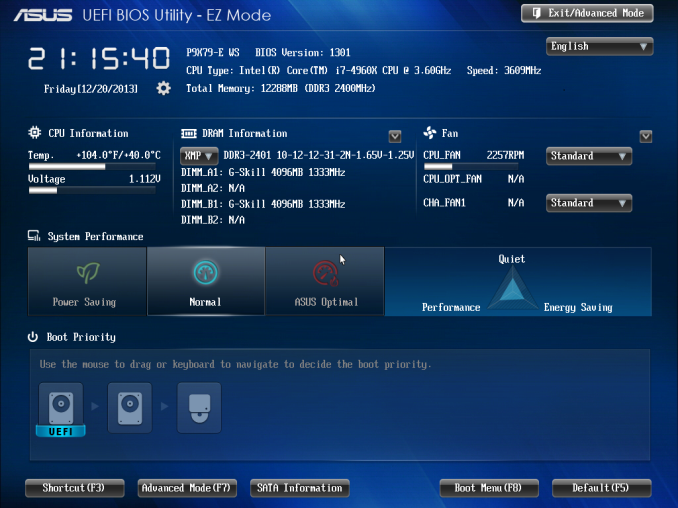
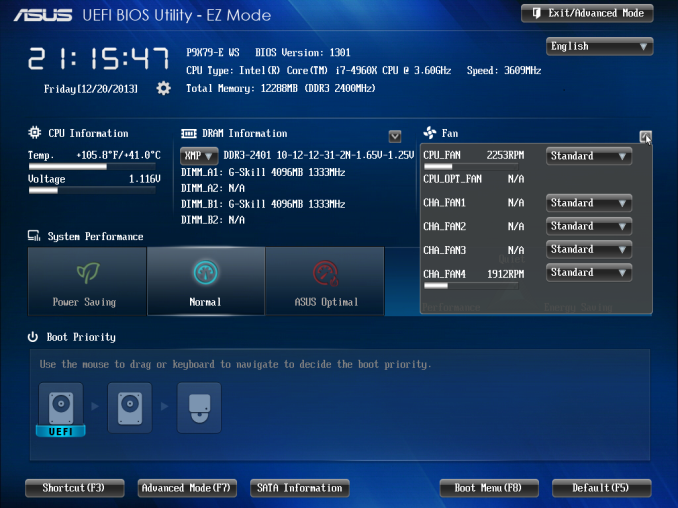
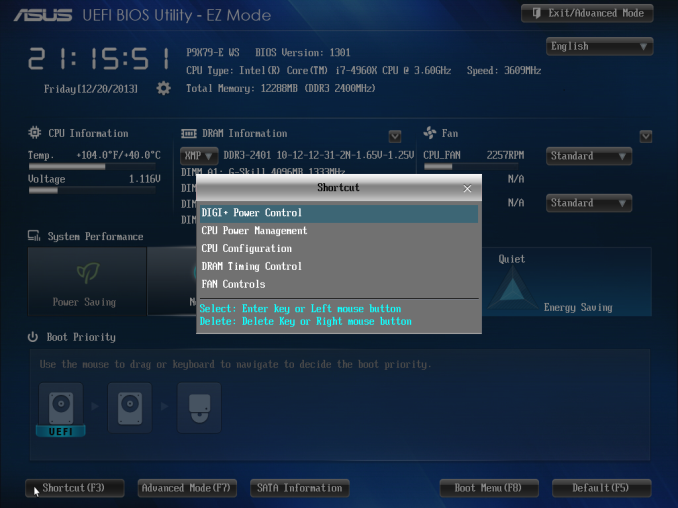

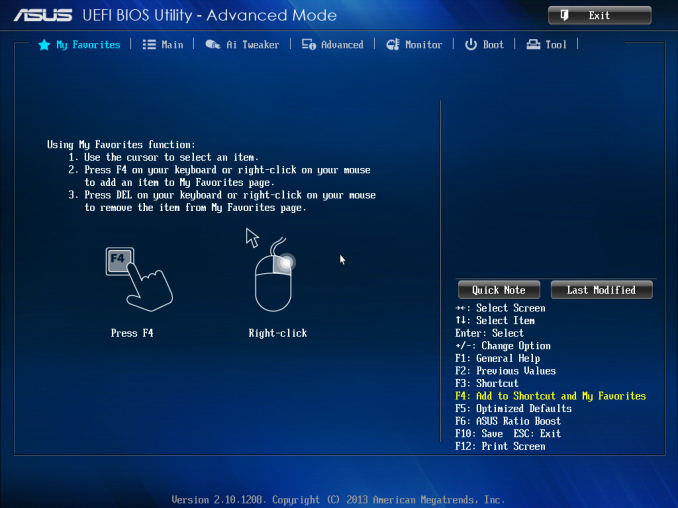
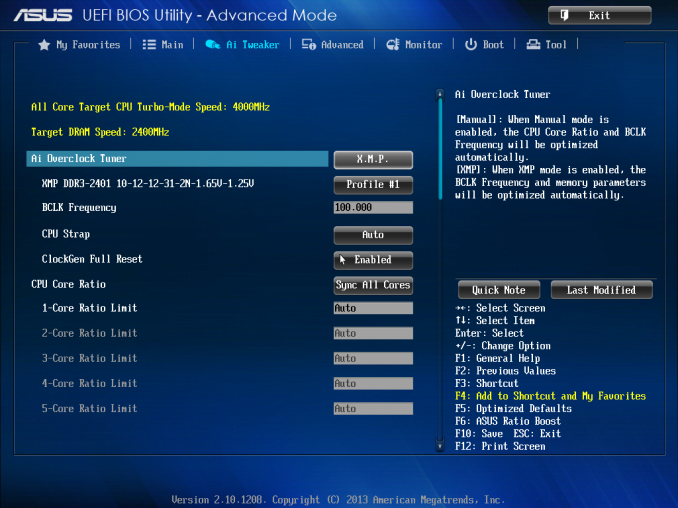
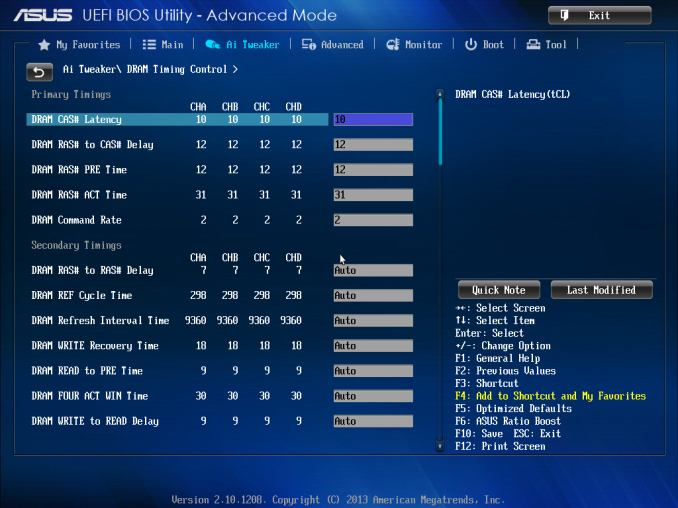
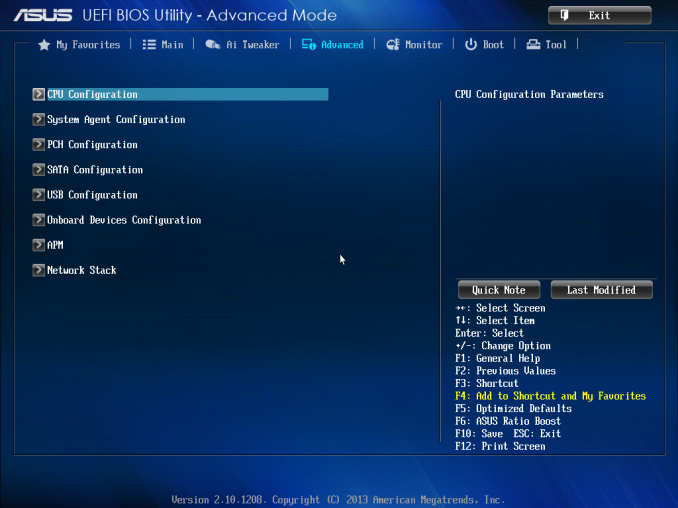
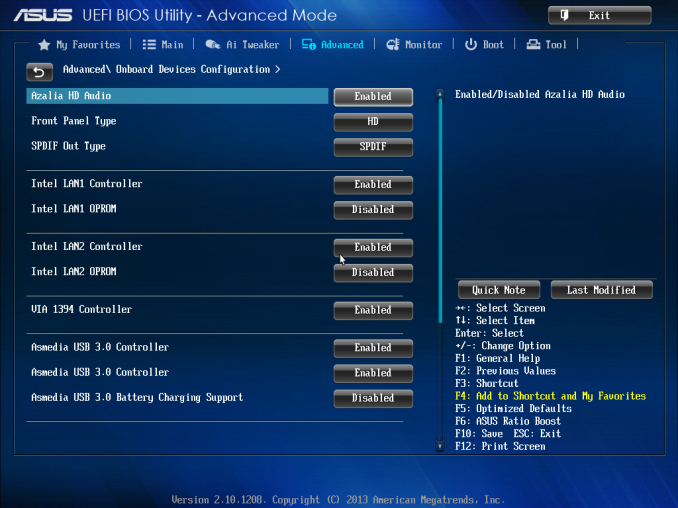
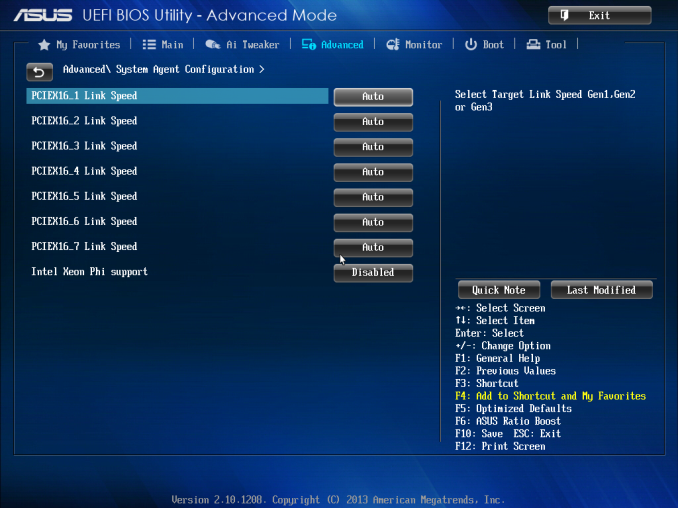
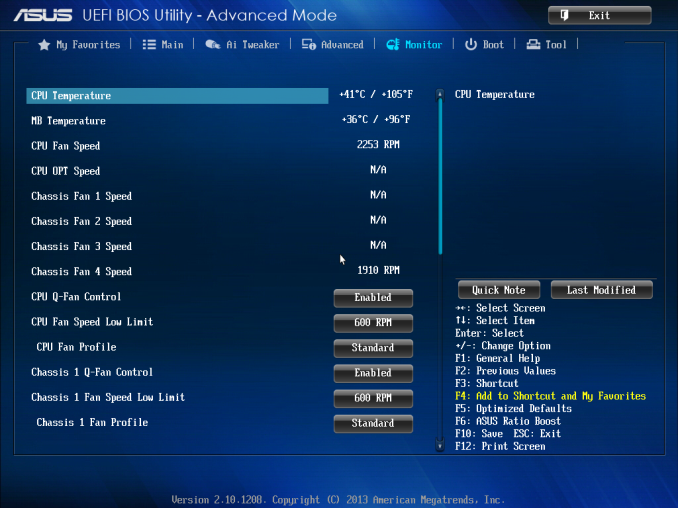
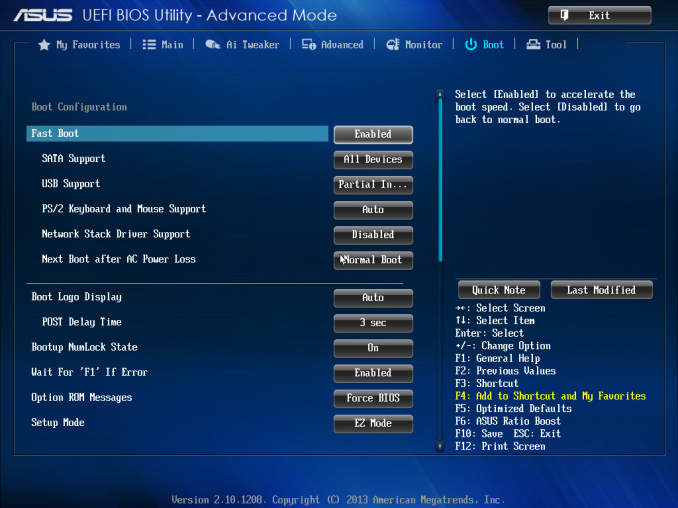







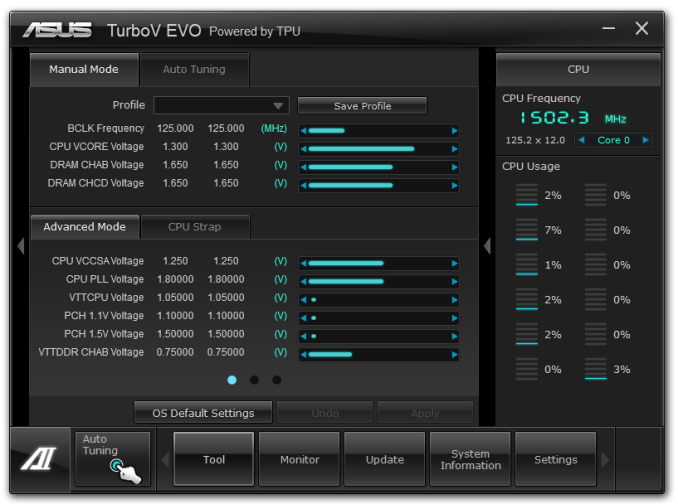
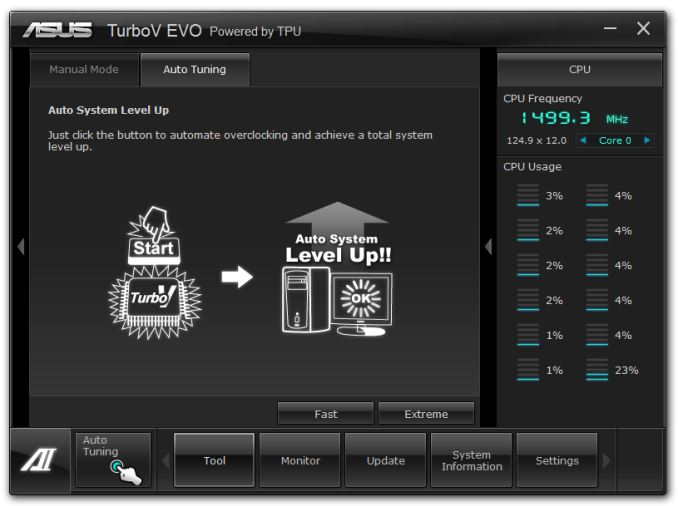
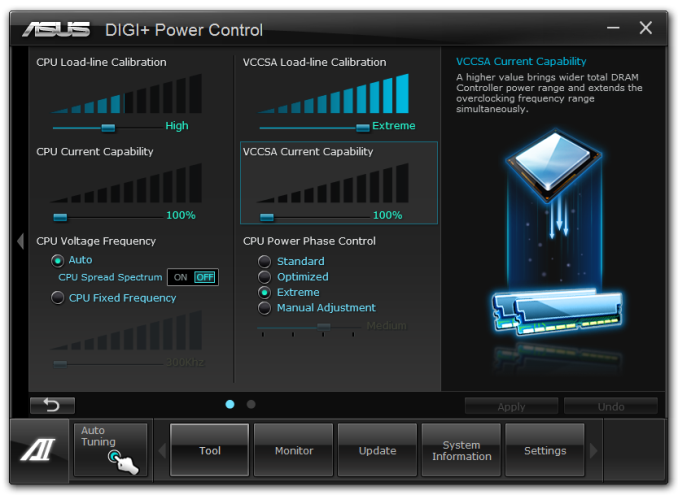
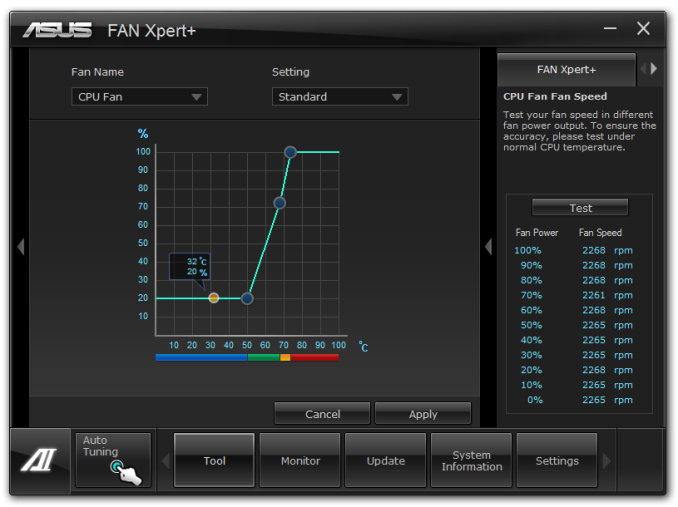
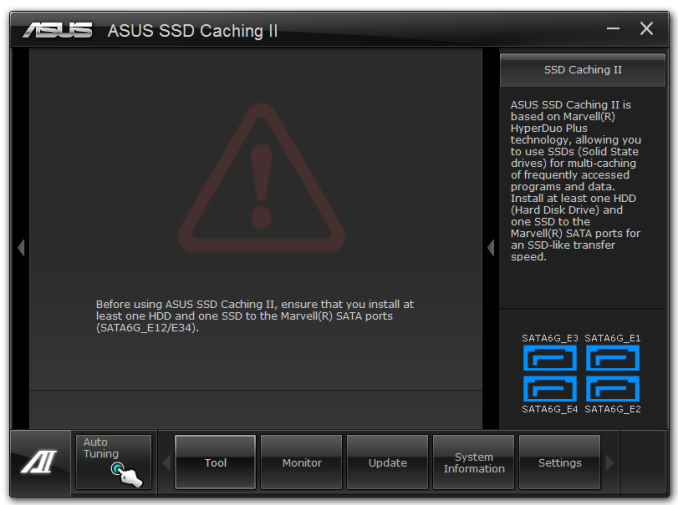
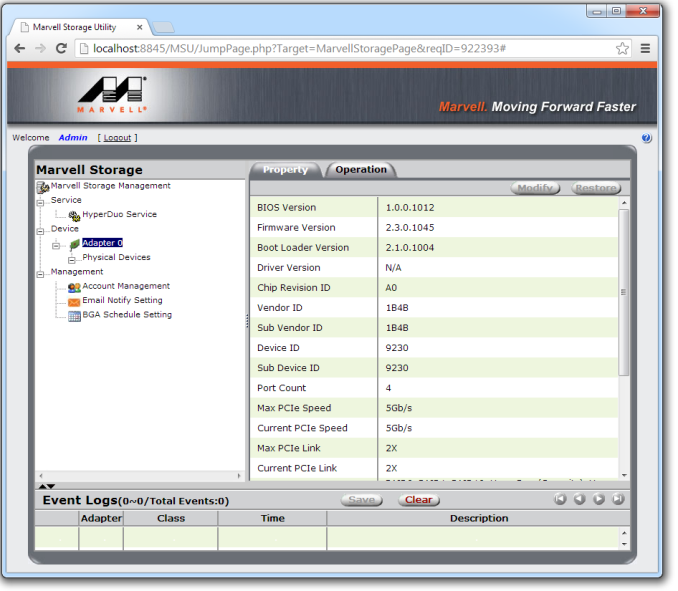














53 Comments
View All Comments
g00ey - Saturday, January 11, 2014 - link
When I looked at the user reviews on Newegg and forums, I saw that there are a lot of issues with this motherboard. So I went with the P9X79 WS motherboard instead that have less negative reviews.Perhaps there are a few issues with these PLX chips that needs to be addressed before it becomes stable...
Ian Cutress - Saturday, January 11, 2014 - link
I saw some of those reviews, mainly being linked to upgrading to Ivy-E, or buying one when they first come out and then upgrading to the CAP BIOS system. My review sample (as the ones on sale should be) was already in CAP, so I just put in the latest BIOS and it worked fine. The PLX chips are tried and tested in many other boards, so no issues there on the chip itself.g00ey - Saturday, January 11, 2014 - link
A motherboard that refuses to post because of a too modern CPU makes things very hard if you don't happen to have an "old" LGA2011 CPU lying around, and most people don't.But the PLX chips tend to give me the heebie jeebies when considering virtualized configurations that use PCI passthrough (IOMMU through Intel VT-d). It is a 'workstation grade' motherboard after all so such usage scenarios should be considered. It would be interesting to know how PLX switch chips affect the PCI passthrough capabilities.
Otherwise, a motherboard with 7 full-lane PCIe slots is really attractive but I guess a dual CPU motherboard is needed for that.
Ian Cutress - Saturday, January 11, 2014 - link
This is why these motherboards support USB BIOS Flashback: the ability to flash a BIOS onto the motherboard without a CPU, DRAM or a VGA installed. It requires renaming the BIOS file, putting it onto a suitable memory stick and following ASUS' instructions. I've used it a couple of times before, and as long as you follow the instructions it is ok: people get frustrated when it doesn't seem to work and there is no feedback (file misnamed, USB not suitable, BIOS not copied properly, BIOS still in old mode requires old BIOS not CAP BIOS).mazzy80 - Sunday, January 12, 2014 - link
Hi,I find the benches useless on Mobo review, all the Mobo perform the same of course +-1/2%, so nobody cares.
in this case the only useful Bench is to measure the impact of PLX of graphic performance in games. it's look like a minimal impact and this it' good, but you can see that x16@PCE3 Vs x8@PCIE3 is at moment of no use.
IMHO the Mobo review should be around stability, quirks, measuring features performance.
in this case :
performances of Marvel 930 and Asmedia SATA3 controllers Vs intel.
Performance of ASmedia USB3 Vs Intel z87.
Stability with 64GB RAM and 3-SLI.
I've this board for few days with E5-1650v2.
I don't like :
You can't run the cpu at Stock Intel Spec. If you enable the Turbo, you get all the core always at the turbo speed with Vcore ramp up. this is no good for a WS board. Why ? there's no option to disable Multicore option.
Fewer Sensor voltages to monitor that board at this price level.
The IB-E support isn't that great still. The default voltage are not correct for CPU PLL (1.8 instead 1.7) VTTIO (1.05 vs 1.00)
there's no way to respect Intel VID of the CPU, there're the manual fixed or the ASUS adaptive.
Like:
64GB rock solid at Intel Specs for VSSA (0.95V)
Stable so far.
mapesdhs - Sunday, January 12, 2014 - link
If you want to run everything at their baseline defaults, I don't see the relevance
of a board like this in the first place. The whole point of this WS board is that it
pairs the oc'ing features of the ROG series with the kind of workstation features
normally found on pro boards. It's an excellent middleground. You'd really want
to run 64GB at minimal speed, etc.? I have 64GB @ 2133 just fine. Plus, in
reality the various voltages you refer to vary from one chip to another wrt their
ideal baseline values; there are no absolutes.
If you want to run stuff at 'stock intel spec', then buy a boring ordinary XEON board,
not one like this which is intended to allow one to do sooo much more.
Ian.
mazzy80 - Monday, January 13, 2014 - link
well I dont' agree.I'd have prefer the options to run all at the specs and the options to 'switch' the gear with overclock. this is not a RIVE dressed in WS... and it'd not to be.
If you want to overclock to the hell the ROG extreme lines is for you.
If you want a stable classic workstation Mobo, with a Xeon, with the option to tweak it, if you wish, well this is what I think the WS lines should be, not a hybrid.
it lacks additional power for CPU for example... only one ordinary 8-pin and nothing else. I find it strange.
even Z87 boards have additional power input, and the Haswell top at 89W TDP from the start... E5-2687Wv2 is a 150W part at 3.4Ghz.... turbo @4GHz is over 200W..
If you buy a I7 why select this board ? there's the Deluxe for you, 2-3SLI to gamming ? RIVE/MF is for you.
This board is for Xeon, ECC memory first, so why force the cpu to run overclocked on stock settings?
mapesdhs - Wednesday, January 15, 2014 - link
The ROG boards are for gamers. I didn't buy one for gaming, so your logic is flawed
from the outset. I built a system for AE and wanted RAID card compatibility, among
other things. Plus, the only ROG board I felt was any good was a lot more expensive.
Whatever you might think the WS should be doesn't matter. It is what it is, a blend of
workstation and top-end gamer board features, the best of both IMO. I don't understand
your concerns; afterall, you don't *have* to oc on _any_ board. Leave everything at their
defaults and it'll be fine as-is. Me, I wanted 64GB RAM @ 2133 and a 6-core @ 4.7+,
with the ability to run four GPUs for CUDA, and RAID card support. The WS is perfect
for this. As for the CPU power issue, I don't see it as even being an issue. Where's your
evidence the WS in any way suffers from not having an extra power connector? The WS
will handle a 3930K @ 5.0 no problem.
Basically, your assumptions are wrong, and thus your conclusions are wrong. The Deluxe
was definitely not for me. The WS supports XEONs just as it supports i7s; saying it's "for"
one chip type or the other doesn't make sense.
For those who _are_ looking for a gaming board though then you do have a point, except
that the PCIe structure is better on the WS-E IMO.
Ian.
PS. And btw, how many CPU-Z submissions have you seen which have a ROG board
with a 3930K @ 4.7+ and max RAM at 2133+ with four GPUs? I've never seen one.
What I wanted to build is in a different league to gaming setups. Games tax just parts
of a system and often not much at that; AE hammers everything at times, gobbling 40GB
RAM no problem, hence the SSD for cache, etc.
viper131 - Sunday, January 12, 2014 - link
Question on the Dr. Power feature. Does this application show you the wattage usage on each separate PCI lane ? Also , did your GPU have a power feed direct from the PSU ?thanks,
luwalo - Tuesday, January 14, 2014 - link
Does a purchase like this make sense in early 2014 when Haswell-E/X99 is coming out later this year? A $500 mobo, plus $500 CPU, plus another few hundred for RAM and you are spending a lot on a part that will be replaced in < a year with something better. I just feel at this time, that this platform is a bit long in the tooth no native USB3 for instance.I'm currently using SB/Z68 (:<) and I'm pretty comfortable waiting for Haswell-E/X99 at this point. It's only been in the last 6 months I've come to desire the X79 feature set.